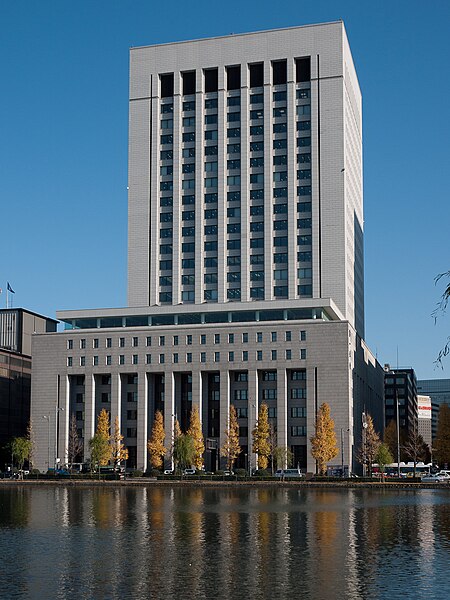DN Tower 21

DN Tower 21 is an office building in Tokyo, Japan. It includes the former Dai-Ichi Seimei Building, in which Douglas MacArthur had his headquarters during the occupation of Japan following World War II. The Government of Tokyo designated DN Tower 21 as a historical building in 2004. The shorter five-story building, the former headquarters of SCAP, was completed in 1933 (renovated 1989–1995) for the headquarters of the Norinchukin Bank, and the Dai-Ichi Seimei began to house its offices in the building in 1938. The shorter building was designed by the Japanese architect Yoshikazu Uchida. The taller 21-storey building (at 99.8 metres in height) began construction in 1988 and was completed in 1993, and was designed by the Irish-American architect Kevin Roche. Shimizu Corporation was contracted to construct both buildings. The building still serves as headquarters for both the Norinchukin Bank and Dai-ichi Life.
Excerpt from the Wikipedia article DN Tower 21 (License: CC BY-SA 3.0, Authors, Images).DN Tower 21
Yurakucho, Chiyoda
Geographical coordinates (GPS) Address Nearby Places Show on map
Geographical coordinates (GPS)
| Latitude | Longitude |
|---|---|
| N 35.675869 ° | E 139.760806 ° |
Address
新館
Yurakucho
100-0005 Chiyoda
Japan
Open on Google Maps










